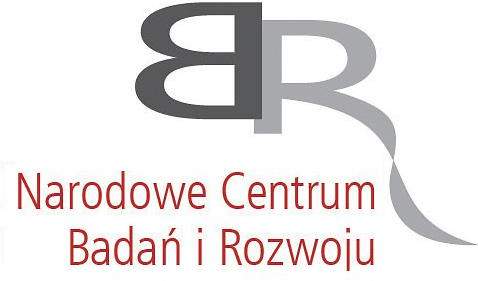| 1. |
West S.♦, Bridge L.♦, White M.♦, Paszek P., Biktashev V.♦, A method of ‘speed coefficients’ for biochemical model reduction applied to the NF-κ B system,
JOURNAL OF MATHEMATICAL BIOLOGY, ISSN: 0303-6812, DOI: 10.1007/s00285-014-0775-x, Vol.70, pp.591-620, 2015 Streszczenie:
The relationship between components of biochemical network and the resulting dynamics of the overall system is a key focus of computational biology. However, as these networks and resulting mathematical models are inherently complex and non-linear, the understanding of this relationship becomes challenging. Among many approaches, model reduction methods provide an avenue to extract components responsible for the key dynamical features of the system. Unfortunately, these approaches often require intuition to apply. In this manuscript we propose a practical algorithm for the reduction of biochemical reaction systems using fast-slow asymptotics. This method allows the ranking of system variables according to how quickly they approach their momentary steady state, thus selecting the fastest for a steady state approximation. We applied this method to derive models of the Nuclear Factor kappa B network, a key regulator of the immune response that exhibits oscillatory dynamics. Analyses with respect to two specific solutions, which corresponded to different experimental conditions identified different components of the system that were responsible for the respective dynamics. This is an important demonstration of how reduction methods that provide approximations around a specific steady state, could be utilised in order to gain a better understanding of network topology in a broader context. Afiliacje autorów:
| West S. | - | inna afiliacja | | Bridge L. | - | inna afiliacja | | White M. | - | inna afiliacja | | Paszek P. | - | IPPT PAN | | Biktashev V. | - | inna afiliacja |
|  |
| 2. |
Paszek P., Ryan S.♦, Ashall L.♦, Sillitoe K.♦, Harper C. V.♦, Spiller David G.♦, Rand D. A.♦, White M.♦, Population robustness arising from cellular heterogeneity,
PROCEEDINGS OF THE NATIONAL ACADEMY OF SCIENCES OF THE UNITED STATES OF AMERICA, ISSN: 0027-8424, DOI: 10.1073/pnas.0913798107, Vol.107, No.25, pp.11644-11649, 2010 Streszczenie:
Heterogeneity between individual cells is a common feature of dynamic cellular processes, including signaling, transcription, and cell fate; yet the overall tissue level physiological phenotype needs to be carefully controlled to avoid fluctuations. Here we show that in the NF-κB signaling system, the precise timing of a dual-delayed negative feedback motif [involving stochastic transcription of inhibitor κB (IκB)-α and -ε] is optimized to induce heterogeneous timing of NF-κB oscillations between individual cells. We suggest that this dual-delayed negative feedback motif enables NF-κB signaling to generate robust single cell oscillations by reducing sensitivity to key parameter perturbations. Simultaneously, enhanced cell heterogeneity may represent a mechanism that controls the overall coordination and stability of cell population responses by decreasing temporal fluctuations of paracrine signaling. It has often been thought that dynamic biological systems may have evolved to maximize robustness through cell-to-cell coordination and homogeneity. Our analyses suggest in contrast, that this cellular variation might be advantageous and subject to evolutionary selection. Alternative types of therapy could perhaps be designed to modulate this cellular heterogeneity. Afiliacje autorów:
| Paszek P. | - | IPPT PAN | | Ryan S. | - | inna afiliacja | | Ashall L. | - | inna afiliacja | | Sillitoe K. | - | inna afiliacja | | Harper C. V. | - | University of Manchester (GB) | | Spiller David G. | - | inna afiliacja | | Rand D. A. | - | University of Warwick (GB) | | White M. | - | inna afiliacja |
|  | 32p. |
| 3. |
Turner D.♦, Paszek P., Woodcock D. J.♦, Nelson David E.♦, Horton Caroline A.♦, Yunjiao W.♦, Spiller David G.♦, Rand D. A.♦, White M.♦, Harper C. V.♦, Physiological levels of TNFalpha stimulation induce stochastic dynamics of NF-kappaB responses in single living cells,
Journal of Cell Science, ISSN: 0021-9533, DOI: 10.1242/jcs.069641, Vol.123, No.16, pp.2834-2843, 2010 Streszczenie:
Nuclear factor kappa B (NF-kappaB) signalling is activated by cellular stress and inflammation and regulates cytokine expression. We applied single-cell imaging to investigate dynamic responses to different doses of tumour necrosis factor alpha (TNFalpha). Lower doses activated fewer cells and those responding showed an increasingly variable delay in the initial NF-kappaB nuclear translocation and associated IkappaBalpha degradation. Robust 100 minute nuclear:cytoplasmic NF-kappaB oscillations were observed over a wide range of TNFalpha concentrations. The result is supported by computational analyses, which identified a limit cycle in the system with a stable 100 minute period over a range of stimuli, and indicated no co-operativity in the pathway activation. These results suggest that a stochastic threshold controls functional all-or-nothing responses in individual cells. Deterministic and stochastic models simulated the experimentally observed activation threshold and gave rise to new predictions about the structure of the system and open the way for better mechanistic understanding of physiological TNFalpha activation of inflammatory responses in cells and tissues. Słowa kluczowe:
NF- Afiliacje autorów:
| Turner D. | - | inna afiliacja | | Paszek P. | - | IPPT PAN | | Woodcock D. J. | - | University of Warwick (GB) | | Nelson David E. | - | inna afiliacja | | Horton Caroline A. | - | inna afiliacja | | Yunjiao W. | - | inna afiliacja | | Spiller David G. | - | inna afiliacja | | Rand D. A. | - | University of Warwick (GB) | | White M. | - | inna afiliacja | | Harper C. V. | - | University of Manchester (GB) |
|  |























